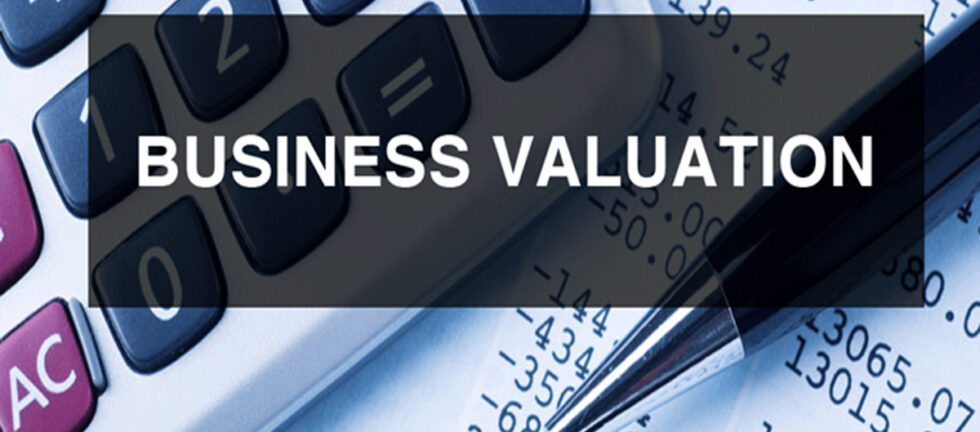WHY YOU NEED A BUSINESS VALUATION
- Understand Potential for Growth
- Ensure Proper Protection of Your Asset
- Develop a Succession or Sale Plan
- For Buy-Sell Agreements with Partners
- To Work with Lenders
- Strategize for Future Acquisitions

THREE BUSINESS VALUATION METHODS
Business valuation is the process through which you can determine the economic value of your business or an organization. There are various circumstances when business valuation becomes essential. For instance, you might be interested in selling your company for taxation purposes. Being familiar with the value of your business is important so you can make a smart decision about your company. Proper valuation requires accurate, comprehensive, and detailed information about the business model, operations, and finances of the business. It is critically important to validate that the historical financial data available to the company is coherent and accurate to perform a valuation and making future value predictions. Only with valid data and a well-planned strategic approach can a reliable projection be made. The completer and more detailed the available information are, the more accurate and higher quality the valuation results will become. Business valuation professionals typically apply three approaches to valuing a business — the cost, market and income approaches — ultimately relying on one or two depending on the type of case and other factors.
- Asset-based approaches
- Market value approaches
- Earning value approaches/Income approach
1-ASSET-BASED APPROACHES
Asset-based business valuation will total up all the investments in the company. Asset-based business valuations can be done in one of two ways:
- A going concern asset-based approach looks at the company’s balance sheet, lists the business’s total assets, and subtracts its total liabilities. This is also called book value.
- A liquidation asset-based approach determines the liquidation value, or the net cash that would be received if all assets were sold and liabilities paid off.
This approach makes the most sense if you have a stable business with a lot of tangible assets – things that have measurable value, and usually a physical form, such as equipment, machinery, furniture, land, and so on. Property and manufacturing businesses tend to be good examples.
2-MARKET VALUE APPROACH
Market value approaches to business valuation attempt to establish the value of your business by comparing your company to similar ones that have recently sold. A ‘multiple’ is usually a ratio that is calculated by dividing an asset’s market or estimated value by a similar metric on another company’s financial statement. It is also called Comparable company analysis (“trading multiples” or “peer group analysis” or “equity comps” or “public market multiples”) is a relative valuation method in which you compare the current value of a business to other similar businesses by looking at trading multiples like P/E, EV/EBITDA, or other ratios.
Price-to-earnings ratio (P/E ratio)
Price to earnings ratio method uses a ratio based on the value of other similar businesses. P/E ratio is the ratio for valuing a company that measures its current share price relative to its per-share earnings (EPS). This tends to suit more established, larger businesses that have had stable growth and sustained periods of positive earnings.
Enterprise multiple EV-to-EBITDA multiple
Enterprise multiple, also known as the EV-to-EBITDA multiple, is a ratio used to determine the value of a company. It is computed by dividing enterprise value by EBITDA. Market value approach of business valuation looks outward at the selling prices of companies in the same space and uses EBITDA value metric, which stands for earnings before interest, tax, depreciation, and amortization using those “guideline companies” as the measuring stick against which the value of the company in question is measured. This approach is problematic as it relates to valuation during the tumult of the COVID-19 pandemic and its effects. Any weight we assign to the historical data used will not accurately represent our current unprecedented economic landscape. Also, the future EBITDA of a business cannot be reliably estimated by historical EBITDA data and will result in increased risk to an investor, thus driving down the value of the business in question.
3-EARNING VALUE APPROACHES
An earning value approach is based on the idea that a business’s value lies in its ability to produce wealth in the future.
Discounted Cash Flow Valuation
Discounted Cash Flow (DCF) Valuation method requires more number-crunching than other approaches. It is an intrinsic value approach where an analyst forecasts the business’ unlevered free cash flow into the future and discounts it back to today at the firm’s Weighted Average Cost of Capital (WACC). A DCF analysis is performed by building a financial model in Excel and requires an extensive amount of detailed analysis and requires estimates and assumptions. DCF model often result in the most accurate valuation. A DCF model allows the analyst to forecast value based on different scenarios, and even perform a sensitivity analysis. This method is one of the most complex ways to value a business, and it relies on several assumptions about long-term conditions. It is often used for stable, mature businesses that have relatively predictable cashflow.
Advantages of DCF
DCF valuation has many advantages as a tool for the valuation of a company.
- It does not require comparisons.
- You can use DCF with multiple scenarios as to how the future plays out.
Disadvantages of DCF
However, using DCF valuation does have some drawbacks.
- You use assumptions about future growth and cash flow. It is tempting to make them overly optimistic.
- Changing your assumptions can create radically different future cash flows.
- Figuring DCF is a complex approach so that errors can creep in.
The Best Choice May Be a Combination
Which is the most appropriate valuation method for any business depends on the type of business, sector, and size. For most businesses, the Earning Value Approach is the most popular business valuation method. However, combination of business valuation methods will be the fairest way to set a selling price.
HOW WE CAN HELP
Ahmad Alagbari Chartered Accountants experts’ team can assist you in business valuations according to your business specific needs and the purpose of the engagement. When appropriate, our valuation report provides an overview of the company, industry, economy; discusses value drivers; outlines the analysis performed, along with the inputs and assumptions; and incorporates detailed exhibits that support our valuation conclusion.

Alia Noor (FCMA, CIMA, MBA, GCC VAT Comp Dip, Oxford fintech programme, COSO Framework)
Associate Partner
Ahmad Alagbari Chartered Accountants






